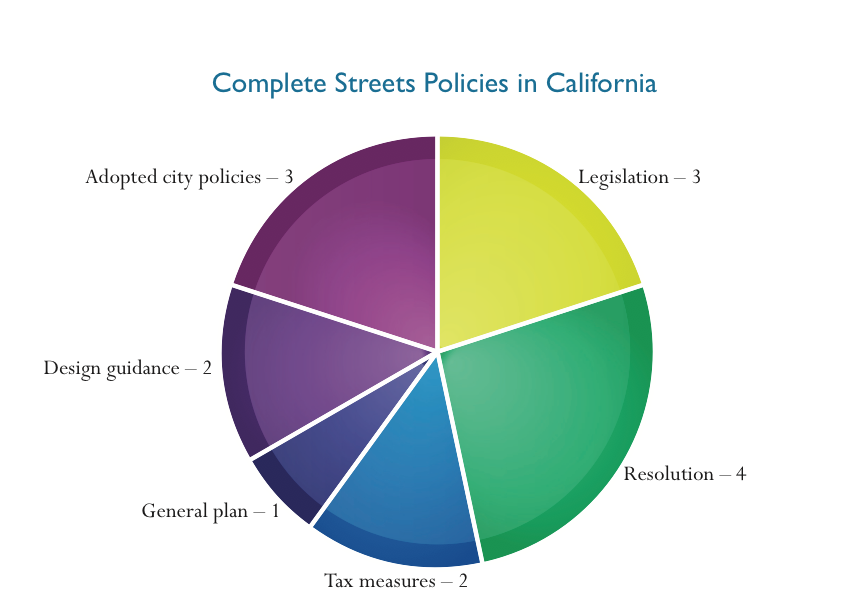NATIONAL COMPLETE STREETS COALITION
Executive Summary
For decades, California and most of the nation have been building streets that are incomplete because they fail to provide safe access for everyone who uses them, whether they are in cars, on foot or bicycle, in wheelchairs, or using public transportation. As a result, people who walk – whether low-income residents catching a bus, seniors out for a stroll, or kids on their way to school – face dangerous, and often deadly, conditions. Others who would like to walk or bicycle – to save money, get exercise, conserve energy, or reduce emissions – do not do so out of fear for their safety.
Between 2000 and 2009, nearly 7,000 Californians were killed while walking. The state ranks third in the nation for pedestrian deaths among older adults, and Latino and African-American residents are far more likely to die as pedestrians than white residents.
The good news is that California and its communities are responding by adopting Complete Streets policies that are already saving lives and improving communities. This report documents some of those success stories and makes the case for changing federal policy so that it supports continued progress toward making our roadways safer for all who use them.
Complete Streets in California
Complete Streets policies ensure that roads are designed and operated to enable safe access for all users: pedestrians, bicyclists, motorists, and public transportation users of all ages and abilities. Caltrans updated a basic policy in 2008, spurring an overhaul of the agency’s procedures and creating new ways to measure how the system meets the needs of those using the roadway by car, foot, bicycle, and public transportation. Fifteen communities in California have adopted Complete Streets policies, most over the last six years. Additionally, a state law passed in 2008 requires communities to include Complete Streets policies in their general plan updates.
Complete Streets policies help make every project a safety project by ensuring that agencies identify opportunities that would otherwise be missed to improve the travel environment for everyone using the roadway. The gradual nature of Complete Streets policy implementation means that the change is fiscally responsible, with modest improvements gradually creating safer streets.
Download Full Executive Summary (PDF): It’s A Safe Decision: Complete Streets in California
About Complete Streets
www.completestreets.org
“Complete Streets are designed and operated to enable safe access for all users. Instead of fighting for better streets block by block, the National Complete Streets Coalition seeks to fundamentally transform the look, feel, and function of the roads and streets in our community, by changing the way most roads are planned, designed, and constructed. Complete Streets policies direct transportation planners and engineers to consistently design with all users in mind, in line with the elements of Complete Streets policies.”






 RSS Feed
RSS Feed